Bravely Default 2
Time Played: 45 hours
Platform: Nintendo Switch
Bravely Default 2 (or Bravely Default II) is catnip for classic RPG apologists. Your characters group up in a line on one side of the Nintendo Switch screen, and enemies coagulate on the other. You take turns wailing on each other with physical and magical abilities until one party falters. For the better part of 60 hours, that doesn’t change. Bravely Default, as a series, has always been designed to add some flair to the turn-based battles of old – layering the curious titular mechanics on top of the familiar to create something new. Or new enough, anyway.
The game is meant to be a fully new chapter in the series – much in the vein of numbered Final Fantasy or Dragon Quest games establishing a whole new world with each entry – and as a fresh start for players that want to get their teeth into a new role-playing adventure, it excels. But, for all the flourishes and revisions to the core RPG formula it's made, Bravely Default 2 still feels hemmed in and hamstrung by its obsession with Final Fantasy 3 or The 4 Heroes of Light.
In many ways, Bravely Default 2 iterates on Bravely Default and Bravely Second; the story is darker, and loses the sanitized YA sheen the first game had. The combat is harder and revels in overwhelming you with options and making you solve puzzles in order to progress. The world itself is broader, and more varied – at the cost of feeling empty or soulless, at times. As much as the development team is daring to dip its feet into new waters, it often feels scared of fully committing to the plunge... and that can have an impact on the game as a whole.
Bravely Default 2 price and release date
- What is it? The third game in the fledgling JRPG series, inspired by classic genre titles
- Release date? February 26, 2021
- What can I play it on? Nintendo Switch
- Price? $59.99/£49.99/AU$69
Holding out for a hero
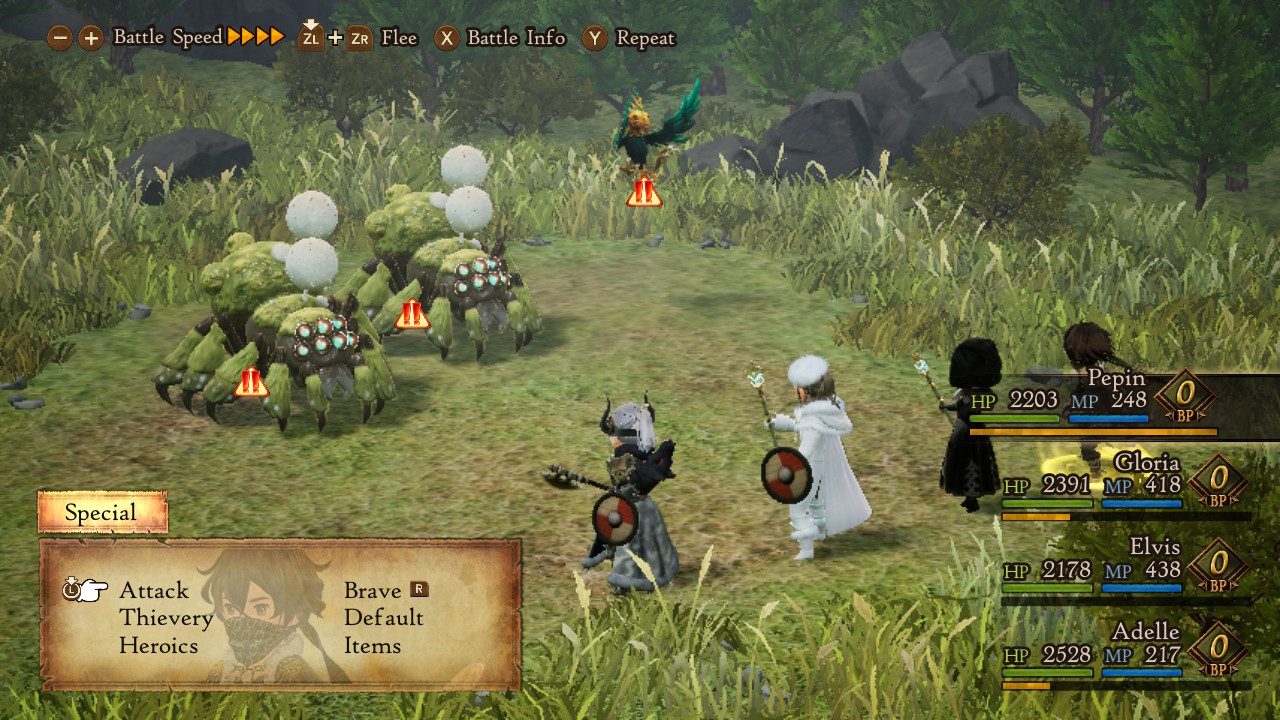
- Revolves around four Heroes of Light as they journey to save the world
- Adheres to many now-standard RPG conventions
- Continues the series’ classic formula (for better and worse)
From the second you boot up the game, the tropes start coming and don’t stop: the main character is a lone pirate that gets washed ashore after a storm, apparently blessed by the divine light of a crystal. He just so happens upon a ragtag crew duo of travelers, who are searching the world for Asterisks (which bestow Jobs on your characters) and employ him to help. Quickly, and conveniently, you run into the deposed princess of a destroyed nation – and from there, you all band together to help the Princess reclaim her lost throne.
At least the characters all have a bit more agency than they did in previous Bravely titles, though. The localization team has knocked it out of the park with its voice acting and scripting choices, and a special mention must be made to Side UK and the voiceover talent they’ve chosen. Having a whole town of friendly Scottish black mages? Inspired. Having one of the first villains you encounter realized as a cocky Aussie chad? Brilliant. Casting budget Bjork as one of your main four heroes? Unlikely, but it works a treat.
If you’ve picked up an old RPG – or any of the other Bravely titles – the rest will seem formulaic enough: you travel from town to town, solving the locals’ problems and unpicking a wider conspiracy whilst you’re at it. Typically, the center of the town's problems will be a corrupt official or malicious bad faith actor who is inconveniencing the common folk for their own diabolical ends. How art imitates life, eh? You and your comrades – through a series of battles, dungeon-crawling escapades and the odd fetch-quest – right the wrongs, set things straight, and head off to the next town.
Style it out
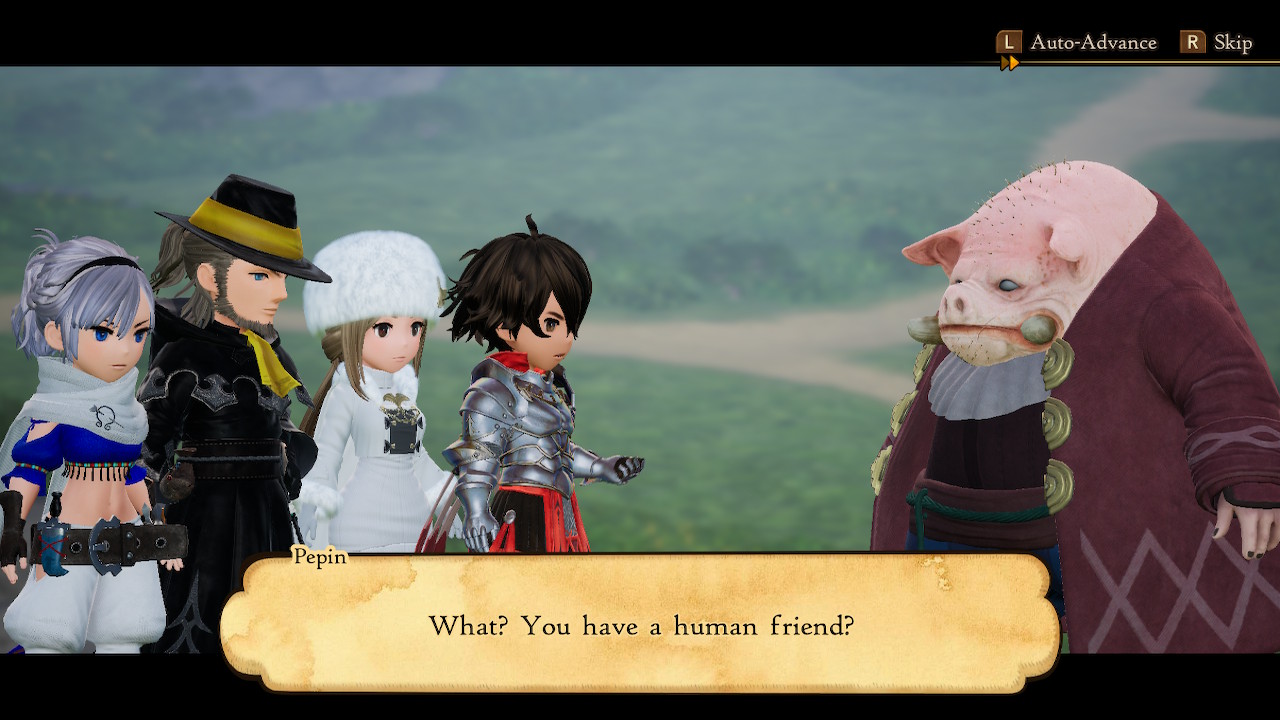
- Peculiar mix of art styles – some gorgeous, some ugly
- Performance ranges from smooth to choppy, seemingly on a whim
- Fun, self-aware and engaging voice acting
Every single town you visit looks incredible. Every single dungeon you enter comes to life with its own palette, its own graphical asset pool, its own unique monsters. Though many may be color-swapped models, at least the developer respects its environments enough to unify dungeon inhabitants with a few extra puffs of mold here and there, or cover them in mud, or make them wear little plant hats, or whatever, depending on where they live. The OST, as you’d expect from a Square Enix game, also matches all of these varied locales with effortless verve and charm. That’s nice.
What’s not so nice is the weird, choppy animation, the low-poly models of the human characters, the not-uncommon lag in battles that’ll cause the game to miss showing you why an enemy absorbed your attacks, or why they countered you and you’re now sat on the Game Over screen. Optimization – for both handheld and docked gameplay – leaves a lot to be desired. But maybe that’s because nudging a series from 3DS to Switch is pretty tricky, especially when your whole art style was devised and perfected around a tiny little 800×240 screen. Transplanting that wholesale onto HD hardware just doesn’t look very good when it comes to 3D models.
And this creates one of the game’s main problems: even the most climactic battles sometimes struggle to connect because of how dodgy the game can feel. Finishing off a boss with a special attack that skips frames of the animation and then just… ends… feels weird. Detached. Unsatisfying. It doesn’t happen all the time, but the inconsistency in performance, the half-baked animations, and the general feel of some of the 3D graphics all combine to make the game – very often – feel anticlimactic.
Why don't you get a job?
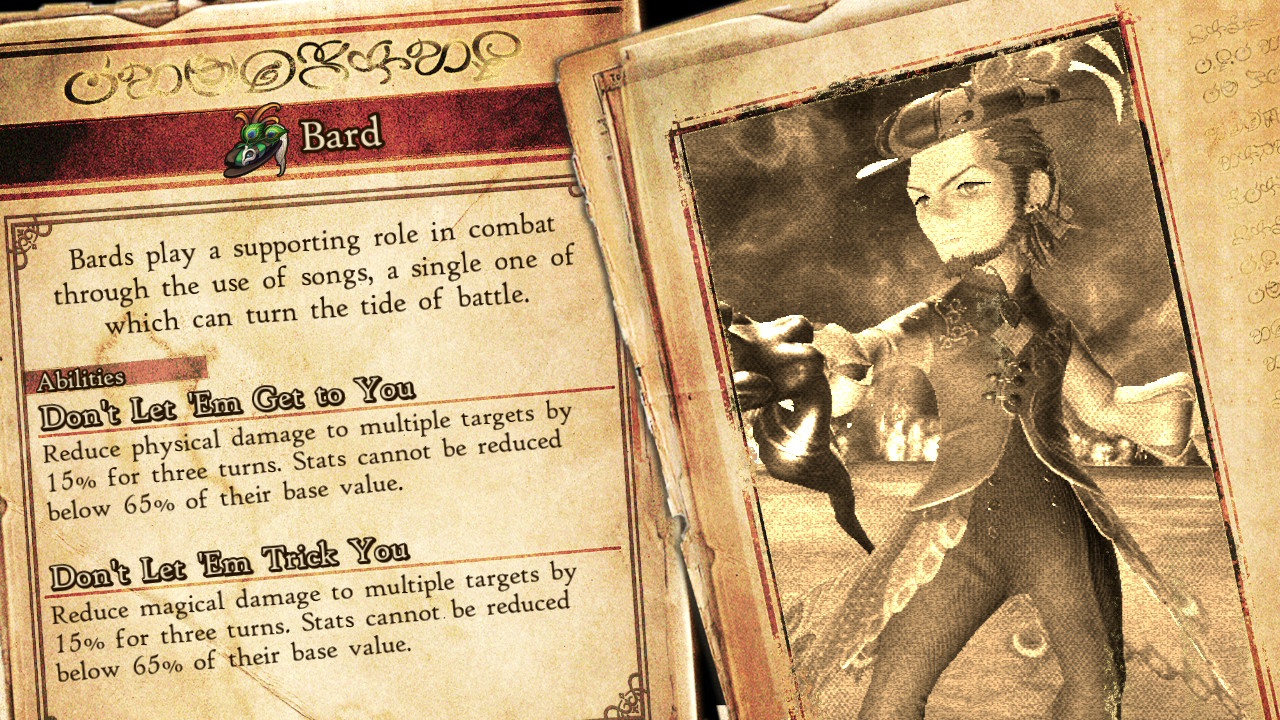
- The Job system underpins every battle and combat puzzle in the game
- Grind-conscious players may want to give this a miss
- Min-max enthusiasts, eat your heart out
And that’s a real shame, because Bravely Default 2’s strongest feature is its combat. Bringing in the eponymous mechanics allows for players to gamble or play it safe – to Brave is to use up a turn ahead of time, to Default is to stock a turn and use it later (taking a defensive stance in the meantime). Rather than doing that for your whole team, as in past games, you now control Brave/Default commands per character.
It sounds simple enough, but then developer Clay Tech Works starts weaving in many more small moving parts that make later combat puzzles fiendish in their complexity. Considering each character can have a main Job and a sub-Job, can carry equipment that makes them more or less likely to be the victim of attacks, and can equip two Accessories that allow them to negate status changes or elemental damage… it can all get a tad overwhelming.
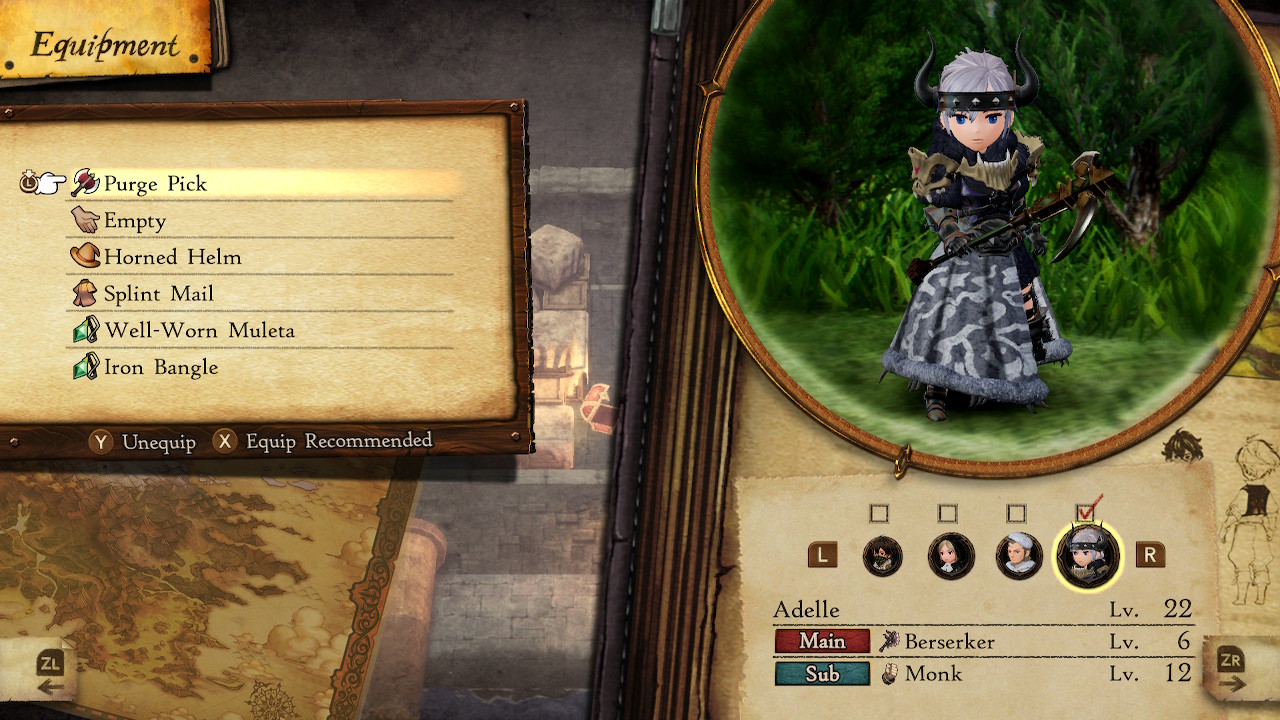
And that’s ironic, really, considering the developer has stated that Bravely Default 2 is designed to grasp lapsed RPG players that find newer genre titles ‘impenetrable’. The upside of this layering of mechanical Jenga is satisfaction when you get it right; going up against an end-of-Chapter boss with the right weapons equipped, the right Jobs in order, and the right Brave/Default rhythm in mind and smashing their last 20,000HP off in one turn – with all your characters Braving their hearts away – is a stupendous feeling. The kind of risk/reward mechanic that moves your butt a bit closer to the edge of your chair, that makes your breath catch in your throat just a bit.
If you’re a fan of grinding, you’ll be happy that the developer has pilfered – wholesale – the one-handed controls from the 3DS games. This means, if you’re playing on Switch Lite for example, you can control everything via the left side of the Switch, or left JoyCon, and use your other hand to scroll your socials and so on. You’ll probably need to grind, too; there are some pretty noticeable level jumps and difficulty spikes if you’re playing on anything other than the easiest mode. Luckily, there’s also an in-game function that allows you to harvest level- and Job-boosting items whilst the game is left idle… but it’s slow-going and meant as a companion to your grinding, not a replacement for it.
Verdict
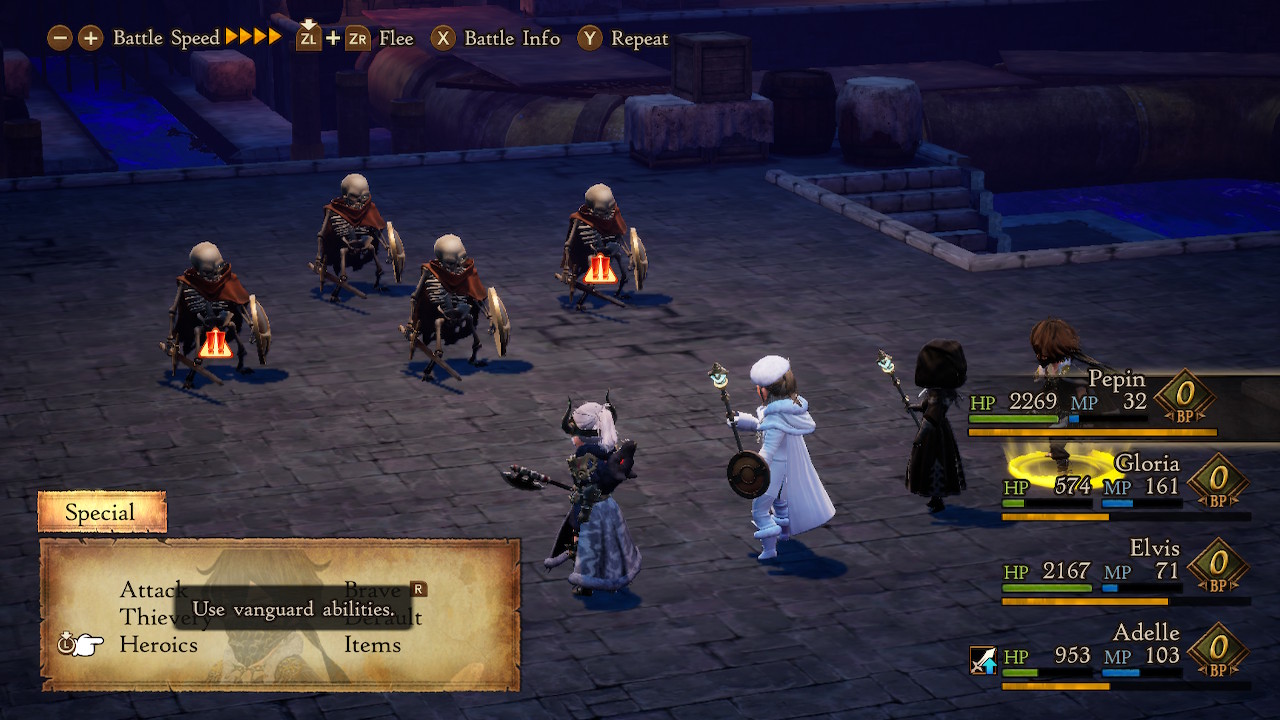
Aside from a few gripes when it comes to formulaic setups, graphics woes and optimization, Bravely Default 2 is a solid RPG. Fans of classic Japanese RPGs – that long for the halcyon days of turn-based combat, min-max mathematics and a linear story – will find something special in this project. Proper devotees of the role-playing game will find joy in the intricate battle system, which oozes with possibility at every turn and threatens to overwhelm at times. Masochists and maniacs will bristle with glee at the deep and rewarding end-game and promise of bosses and super-powered monsters tucked into the darkest recesses of the world.
It’s a solid game, and one that expands on what worked in previous Bravely titles whilst plastering over what didn’t. A game that rewards tactical thinking, scratches your itch for ceaseless exploration, and does it all with charm and self-awareness? Sounds like a Job for Bravely Default 2.
- Best Switch games: the most essential Nintendo Switch titles
0 comments:
Post a Comment